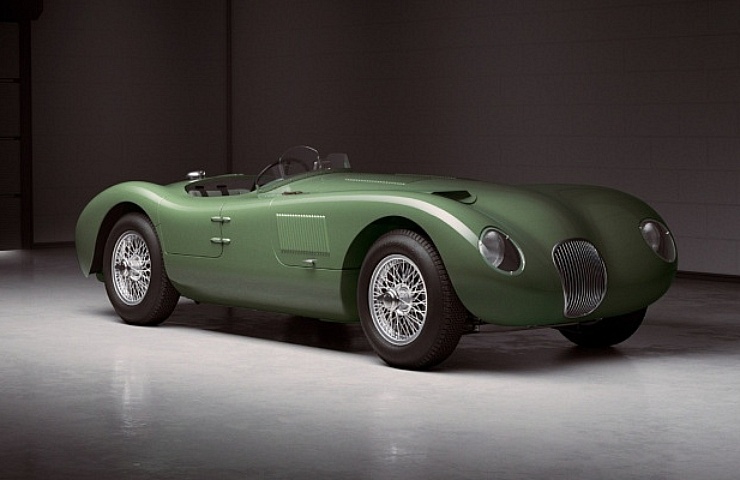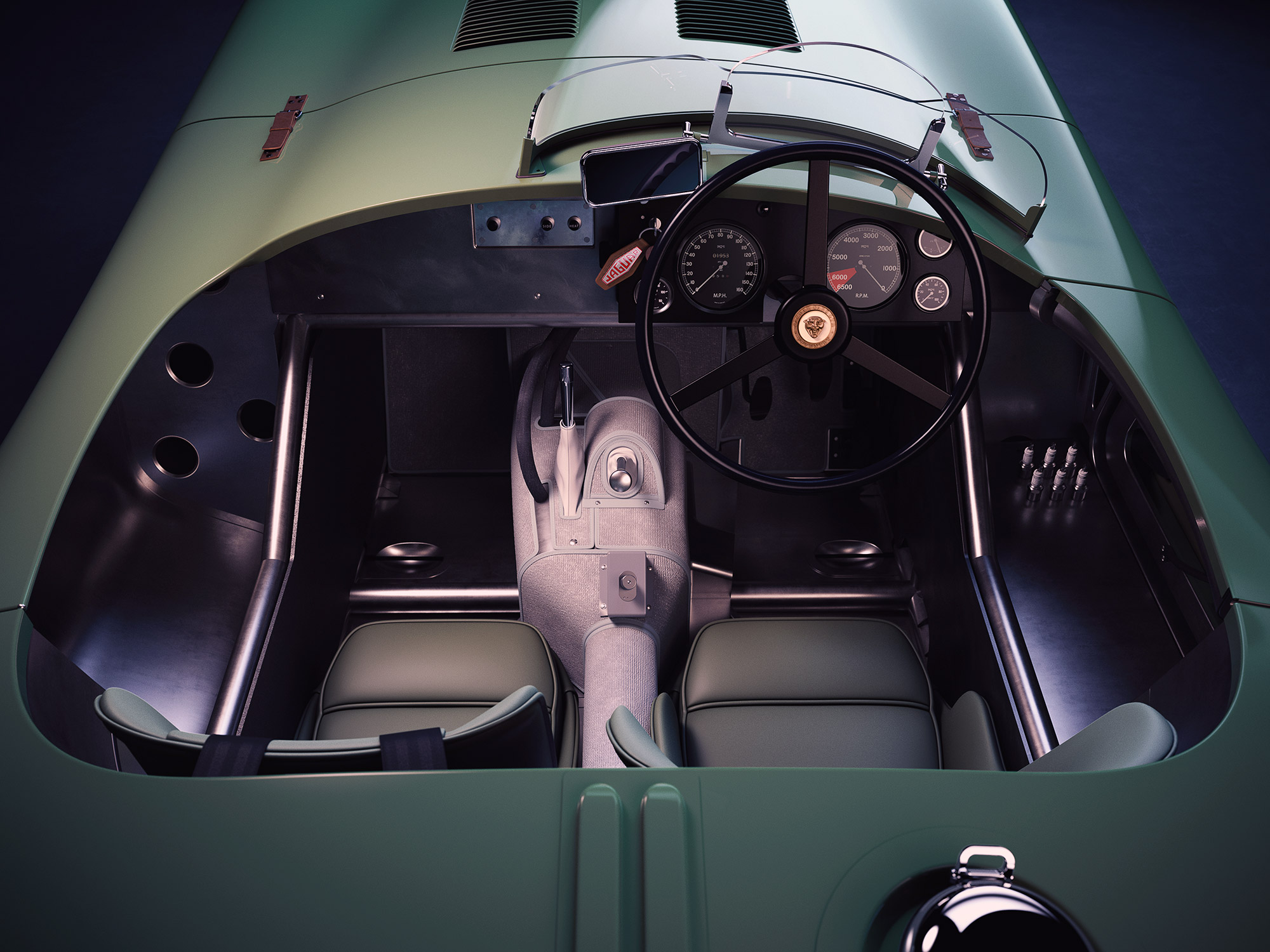Jaguar is very much a contemporary automaker. But it also celebrates its rich history through the Jaguar Classic brand, which previously built limited editions of the storied Lightweight E-Type, the D-Type, and its road-going version, the XKSS. Now, the Le Mans-winning C-Type racer gets its turn.
A Limited Edition of 8 Recreations
The company will produce eight of these recreations for delivery in 2022. The model is the disc-brake equipped “works team” C-Type that won Le Mans in 1953. Co-drivers Duncan Hamilton and Tony Rolt took the trophy at a blistering average speed of 105.85 mph. That marked the first time the race had been won at a pace of more than 100 mph.
The cars, to be built in Coventry, England, feature a 3.4-liter, 220-horsepower version of Jaguar’s classic XK inline-six, with triple Weber 40DC03 carburetors. Options include an FIA-approved Harness Retention System and colors that, naturally, feature British Racing Green. Birch Grey, Cream, and Red are other color options.
Classic Cars Via Digital Tools
Although the cars will be hand-built, they also benefit from the latest computer-assisted drawing and engineering tools. Prospective owners can use an online configurator to specify exterior and interior colors, badges, and roundels. With just eight cars being built, supplies won’t last.
Only 53 C-Types were built in the 1950s, and 43 of them went to private owners. Any real C-Type is extremely valuable. The one that came in fourth at that 1953 Le Mans race sold for $13.2 million at Monterey in 2015. No price has been specified for the continuation cars, but it will be expensive.
Response from Collectors
Brian Rabold, vice president of valuation services at Hagerty, told eBay Motors:
“The recent crop of continuation cars from marques like Aston Martin and Jaguar has drawn criticism that they will devalue the originals. However, with a Hagerty price guide condition value of $6 million, some collectors have stopped driving their C-Types. If anything, continuation cars enhance the value of the model by exposing them to a new audience that will show and drive them frequently.”
One big caveat about these cars: You can’t drive them on public roads. Jaguar’s Taylor Hoel tells eBay Motors:
“A continuation car is a brand-new vehicle hand-built from scratch. That’s why it’s only intended for private track use, not public roads. As a brand-new car, it would be required to meet current regulations for road use, which are not compatible with its authentic 1950s design and engineering specification.”
The Shape of a Racer
The C-Type’s aerodynamic shape looked radical in 1951 when it was first produced. One of the principal brains behind the car was Malcolm Sayer, a pioneer in using wind tunnels to reduce drag. Jaguar and Dunlop co-developed the car’s disc brake system, which was also ahead of its time. In fact, with 22-year-old Stirling Moss at the wheel in the 1952 Reims Grand Prix, Jaguar secured the first-ever win for a car with disc brakes.
The C-Type was based on and used the basic drivetrain of the XK-120, the first modern Jaguar sports car. But it installed a svelte, low-drag aluminum body on a tube frame from the company’s chief engineer, William Heynes.
A C-Type also won Le Mans in 1951, piloted by Peter Walker and Peter Whitehead. Two other cars, one co-driven by Moss, failed to finish. The 1952 Le Mans was a bust, with all vehicles retired for mechanical reasons. But in its final year, 1954, the C-Type came in fourth at Le Mans, driven by Roger Laurent and Jacques Swaters.
The C-Type Still Looks Great
American race champion Phil Hill said of the C-Type:
“When I look back on it now, it makes me smile. The steering was light—almost scary light. It was the first car I ever drove that had a really precise feel about it. It really felt like a racing car.”
The styling of the C-Type doesn’t look dated even now. That’s one reason why several companies, including Classic Jaguar Replicas, have built copies over the years.
eBay occasionally sells those examples, and it currently has a very good stock of C-Type parts.








